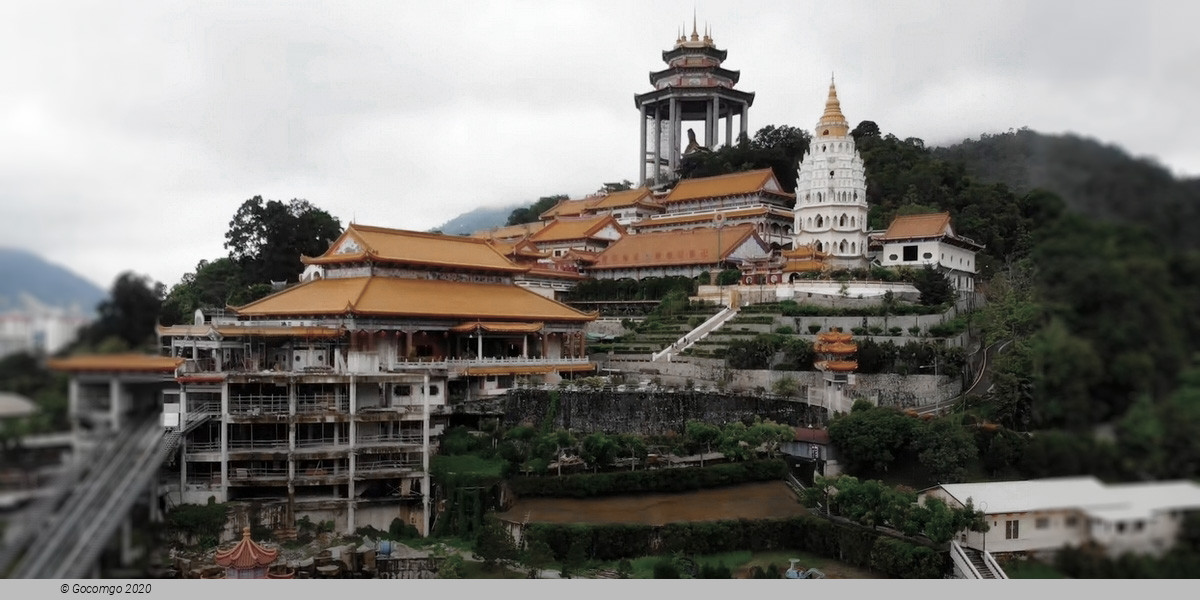George Town

George Town is the capital city of the Malaysian state of Penang. George Town is Malaysia's third most populous city with 708,127 inhabitants as of 2010, while Greater Penang, with a population of 2,412,616, is the second-largest conurbation in the country after Greater Kuala Lumpur. The historical core of George Town has been inscribed as a UNESCO World Heritage Site since 2008. Established as an entrepôt by Francis Light of the East India Company in 1786, George Town was the first British settlement in Southeast Asia.
Centuries of development have brought a mix of architectural styles to George Town, both historical and modern. The oldest portion of the city center is a UNESCO World Heritage Site, while outside the UNESCO zone lies the modern cityscape, with skyscrapers, residential high-rises, office blocks, and shopping malls built all over the city.
Most of George Town's famous heritage landmarks, including Fort Cornwallis, the City Hall, the High Court, St. George's Church, and the Eastern & Oriental Hotel are located within the UNESCO World Heritage Site. The city's main Central Business District at Beach Street, also within the UNESCO zone, is home to banks built-in various Art Deco-based hybrid styles. Colonial-era bungalows, such as The Residency and Suffolk House, can be found throughout the city as well.
Aside from colonial European architecture, a huge assortment of Asian architectural styles also exist throughout the city. Buildings like the Kapitan Keling Mosque, Kong Hock Keong Temple, Cheong Fatt Tze Mansion, and the Pinang Peranakan Mansion are notable for their architectural styles, which combine diverse cultural influences. Peranakan townhouses, exemplified by the Sun Yat-sen Museum, dominate the cityscape as well. Meanwhile, Indian architecture is more prominent within the city's Little India, which also contains the Sri Mahamariamman Temple.
In the suburbs, the Siamese and Burmese communities have left their mark too; the Buddhist temples at Pulau Tikus include Wat Chaiyamangkalaram and the Dhammikarama Temple. Another example of hybrid Asian architecture is the Kek Lok Si Temple at Air Itam, which merges Chinese, Siamese, and Burmese influences.
Since the mid 20th century, modern urbanization has transformed much of George Town. Just south of the UNESCO World Heritage Site stands the Komtar Tower, the tallest skyscraper in Penang at nearly 250 m (820 ft) tall.
George Town is the birthplace of a unique form of Chingay procession, which began with its first parade in 1919. Penang's variant of Chingay includes the act of balancing gigantic flags on one's forehead or hands. An annual Chingay parade is held in the city every December, though Chingay performances are also a common feature of Chinese festivities and major state celebrations in Penang.
The Penang State Museum and Art Gallery houses relics, photographs, maps, and other artifacts that document the history and culture of Penang. Other museums within the city focus on religious and cultural aspects, as well as famous personalities, including the Penang Islamic Museum, Sun Yat-sen Museum, P. Ramlee's House, Batik Painting Museum, and Universiti Sains Malaysia Museum and Gallery.
George Town's cultural melting pot of various races and religions means that there are a great many celebrations and festivities in any given year. The major cultural and religious festivities in George Town include, but not limited to, the Chinese New Year, Chap Goh Meh, Songkran, Wesak Day, Seventh Month Festival, Nine Emperor Gods Festival, Eid ul-Fitri, Deepavali, Thaipusam, Vaisakhi and Christmas.

